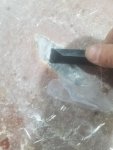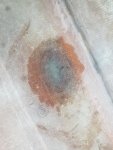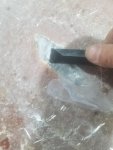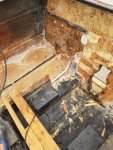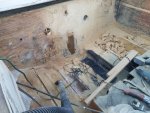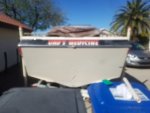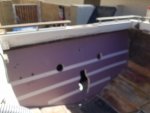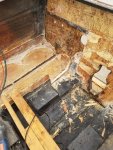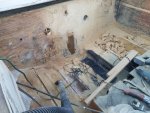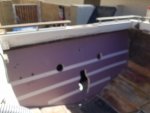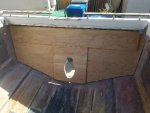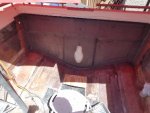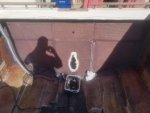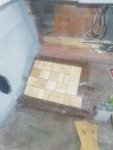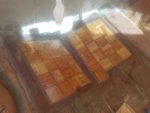davedog
Seaman Apprentice
- Joined
- Aug 4, 2010
- Messages
- 33
Thanks tpenfield for your help posting pics.
The more I think about these white areas, I think they must have been caused by either the core sticking the resin out when originally built or they were areas where the core was most wet and the moisture desalinated that area.
Regardless I will grind out these areas hopefully without going thru the hull.
Layup schedule:
1.5oz CSM
1708
1708
1.5oz CSM
I feel this should rebuilt and strengthen the area, but will probably make a high spot which will cause issue when laying the new core back down so will most likely have to sand this area back down or somehow build up the areas surrounding these patches before able to attach new core.
Does this all sound correct?
My next question for more clarity. When ready to lay new coring, this is to be done with just resin and maybe some chopped fibers mixed in, but no Cabosil. Is that correct? Using Poly btw. If I use epoxy for the core it will force me to have to use epoxy for everything going forward like top skin and stringers tabbing etc. So need to stick with Poly since have 15 gallons.
Thanks for any input and advice on all of this.
The more I think about these white areas, I think they must have been caused by either the core sticking the resin out when originally built or they were areas where the core was most wet and the moisture desalinated that area.
Regardless I will grind out these areas hopefully without going thru the hull.
Layup schedule:
1.5oz CSM
1708
1708
1.5oz CSM
I feel this should rebuilt and strengthen the area, but will probably make a high spot which will cause issue when laying the new core back down so will most likely have to sand this area back down or somehow build up the areas surrounding these patches before able to attach new core.
Does this all sound correct?
My next question for more clarity. When ready to lay new coring, this is to be done with just resin and maybe some chopped fibers mixed in, but no Cabosil. Is that correct? Using Poly btw. If I use epoxy for the core it will force me to have to use epoxy for everything going forward like top skin and stringers tabbing etc. So need to stick with Poly since have 15 gallons.
Thanks for any input and advice on all of this.




















